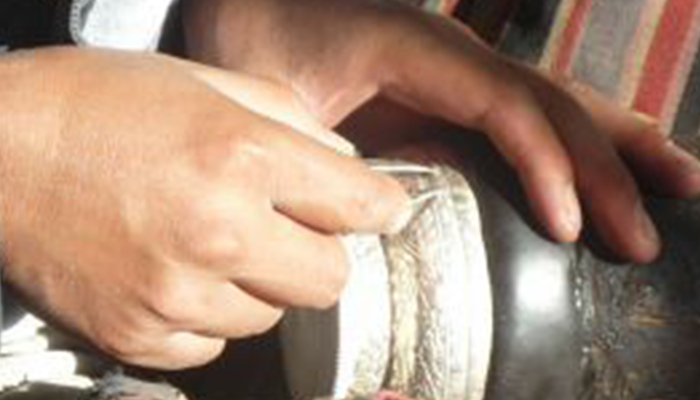Tibetan Metal Forging Technology
Zhaxi Coloured Gold, Silver and Copper Processing Plant in Xikaze City, Tibet, has a long history. It is the earliest gold and silver bronze enterprise in the region with strong technical force. According to textual research, Danbainima of Panchen VII (1780-1854 A.D.) invited goldsmiths from Nepal to set up a processing site south of Zhaxiji Coloured in Luding (transliteration), specially organizing skillful craftsmen to process temple articles. 。
On May 23, 2011, Tibetan metal forging technology was approved by the State Council and listed in the third batch of national intangible cultural heritage list.
Essential information
Name of Cultural Heritage: Metal Forging Skills of Tibetan Nationality (Metal Forging Skills of Zaxiji Coloured Gold, Silver and Copper)
Belonging region: Xigaze, Tibet
Heritage No. -120
Heritage Category: Traditional Skills
Date of declaration: 2011
Declarer/Declarator: Xigaze District, Tibet Autonomous Region
Heritage Level: Country
brief introduction
Since then, Zhaxi Jicai has become an administrative village with gold, silver and bronze processing factories and gold, silver and bronze craftsmen concentrated. All kinds of craftsmen have abundant talents. There are many kinds of gold, silver and bronze wares with good quality. It has a high reputation both inside and outside the region.
History
Zhaxiji Coloured Gold, Silver and Copper Processing Plant in Xikaze City, Tibet has a long history. According to textual research, the seventh Panchen Danbainima (A.D. 1780-1854) invited gold and silver artisans from Nepal to set up a processing site in Luding (now south of Zhaxiji Colour), specializing in the organization and processing of temple supplies. Zhaxiji Gold, Silver and Copper Processing Plant was developed on the basis of the craftsmen'mutual assistance group in 1960. At that time, there were 18 craftsmen, each of whom had a share of 8 to 20 yuan. In 1966, he became a craftsman team of Zhaxi Jicai People's Commune. His main business is powder processing and gold, silver and bronze processing. In 1980, it was renamed Zhaxiji Coloured Gold, Silver and Copper Co., Ltd. with a capital of 46,000 yuan and a staff of 44 people. The production project was to process gold, silver and copper ware. In 1987, it was renamed Zhaxiji Coloured Gold, Silver and Copper Factory. The products produced by this factory mainly consist of articles for people's daily life and religious supplies. It also produces tourist souvenirs, arts and crafts, etc. There are more than 100 kinds of products.

0 Questions
Ask a Question
Your email address will not be published.